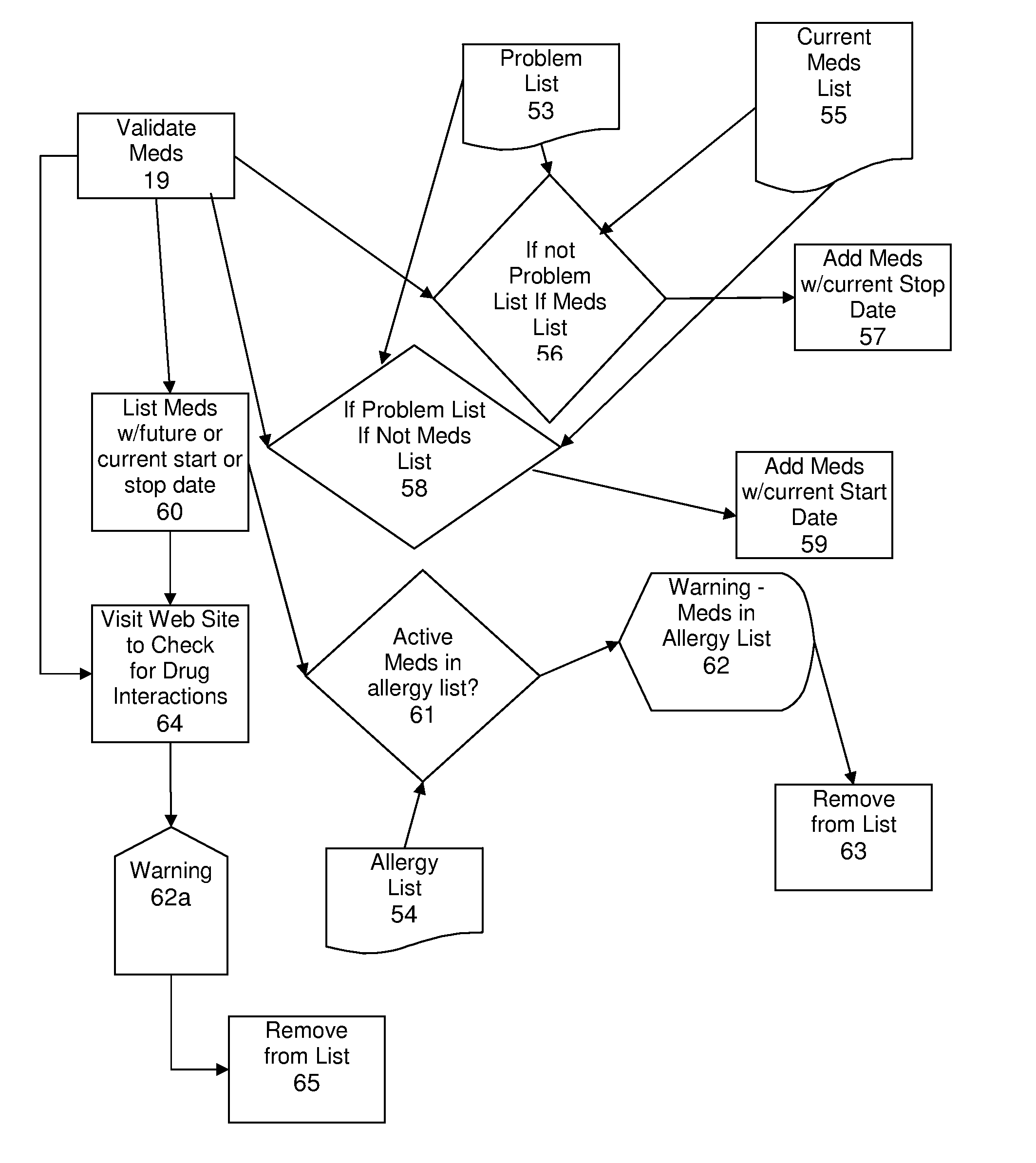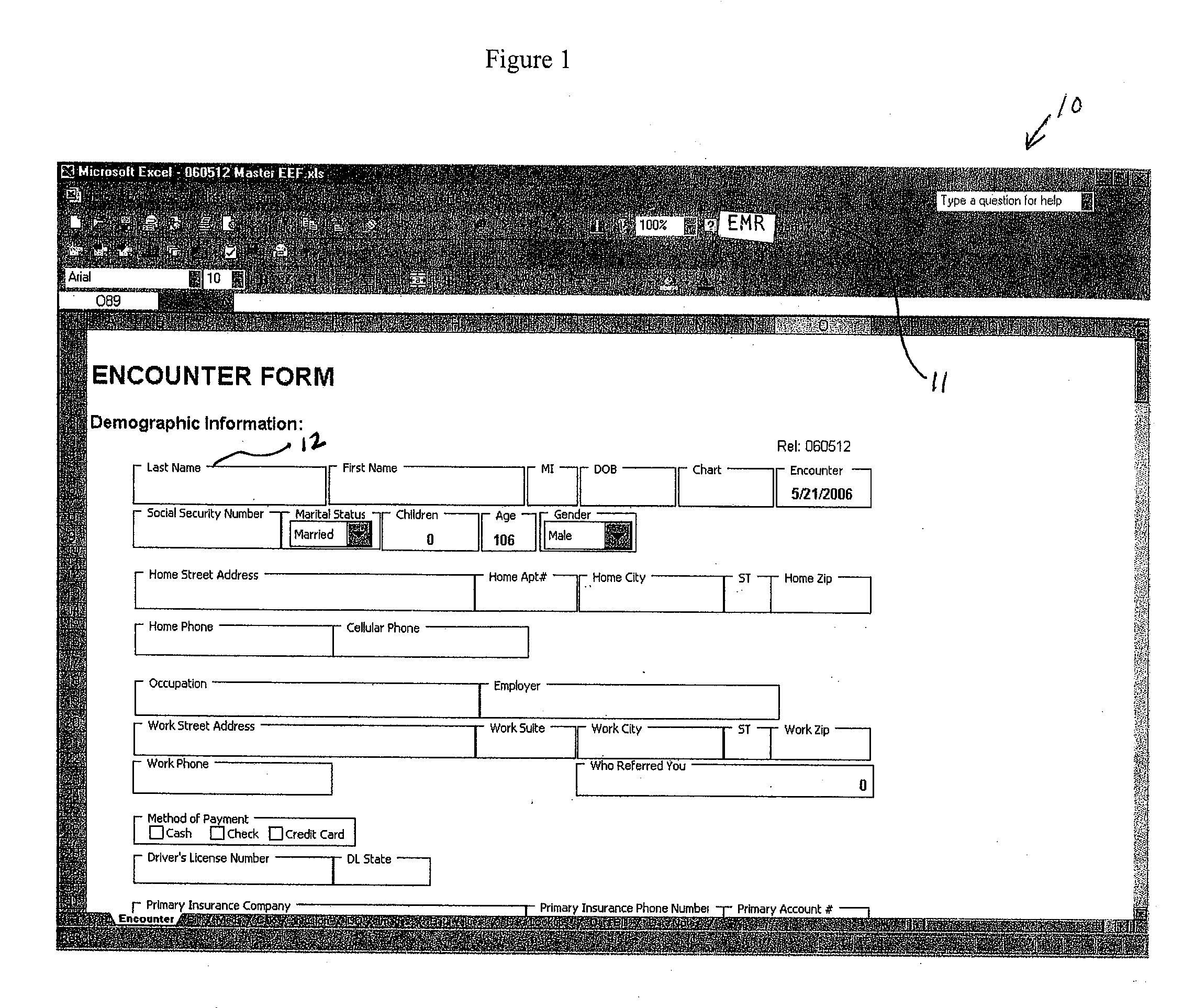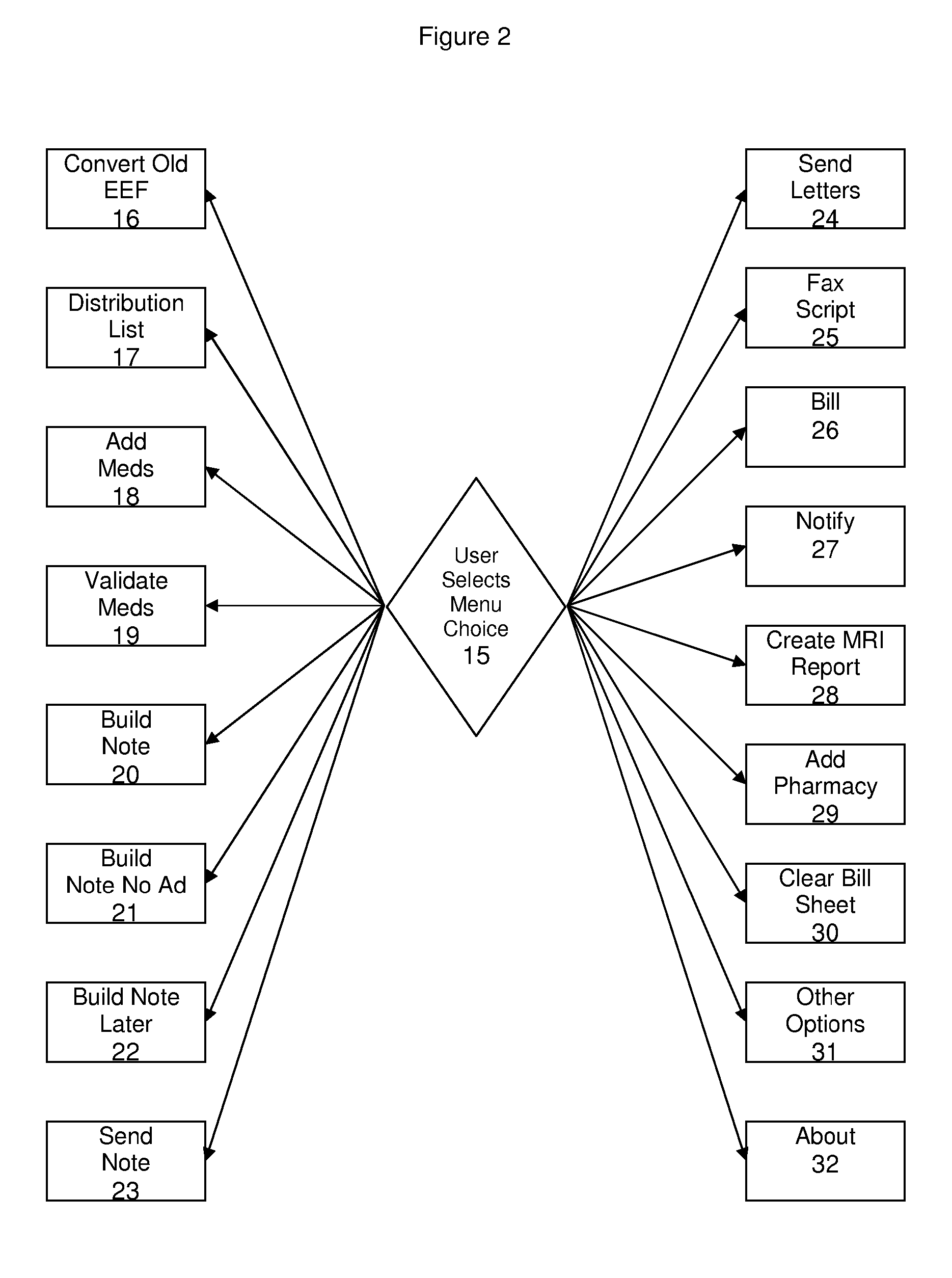Adaptable Electronic Medical Record System and Method
a medical record system and electronic medical record technology, applied in the field of electronic medical records, can solve the problems of easy misreading, high processing cost, and paper records that are likely to contain errors
- Summary
- Abstract
- Description
- Claims
- Application Information
AI Technical Summary
Problems solved by technology
Method used
Image
Examples
Embodiment Construction
[0044] Implementation of an electronic medical record system according to the invention requires two preliminary steps. The first is creation of forms in a spreadsheet software, typically Microsoft Excel, with the same or substantially similar appearance to paper forms utilized in a physician practice. The particular order of the data fields in the spreadsheet version of forms makes no difference to the operation of the EMR system since the fields can be tagged with data type identifiers similar to the process utilized in extensible markup language (XML), and thus the electronic forms utilized in the current EMR system will appear familiar to the staff of a physician's office, while not affecting the operation of the EMR system. The second preliminary step is the installation of an EMR system add-in to the practice's spreadsheet software, typically an add-in for Microsoft Excel. It will be understood that the invention may be implemented on a variety of spreadsheet software, however...
PUM
 Login to View More
Login to View More Abstract
Description
Claims
Application Information
 Login to View More
Login to View More - R&D
- Intellectual Property
- Life Sciences
- Materials
- Tech Scout
- Unparalleled Data Quality
- Higher Quality Content
- 60% Fewer Hallucinations
Browse by: Latest US Patents, China's latest patents, Technical Efficacy Thesaurus, Application Domain, Technology Topic, Popular Technical Reports.
© 2025 PatSnap. All rights reserved.Legal|Privacy policy|Modern Slavery Act Transparency Statement|Sitemap|About US| Contact US: help@patsnap.com



